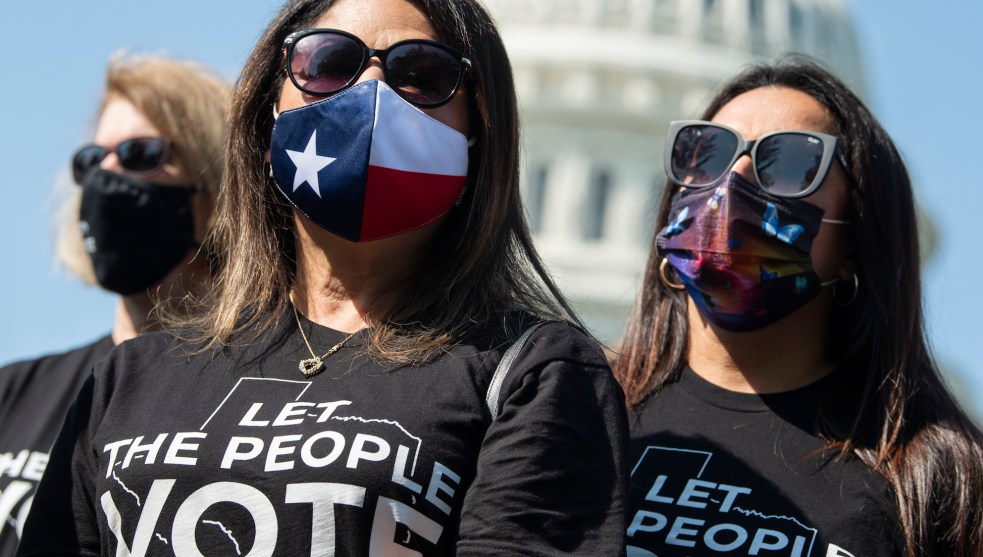
U.S. Attorney General Merrick GarlandSarah Silbiger/Pool/CNP/Zuma
Months after Texas Republicans approved gerrymandered redistricting maps that diluted the voting power of communities of color, the Justice Department is suing the state for violating the Voting Rights Act.
As my colleague Ari Berman wrote, Texas’ new election maps increase the number of districts with white majorities—even though 95 percent of the state’s population growth in the last decade has come from communities of color.
This gerrymandering is a brazen attempt to cement Republican dominance in the state despite demographic change:
The maps consolidate white power as the white population is shrinking as a percentage of the state, and eliminate political competition at a time when longtime GOP strongholds are trending blue. The number of safe GOP seats would double in the new congressional maps, from 11 to 22, and the number of competitive districts would fall from 12 to just one. GOP candidates for Congress received 53 percent of the statewide vote in 2020, but are forecasted to control 65 percent of US House seats under the new map.
The suit came after the gutting of the Voting Rights Act by the Supreme Court in 2013. For the first time in nearly 50 years, the federal government did not have to approve the redistricting maps before they went into effect. The only option for Justice Department was to sue, using the parts of the VRA left intact.
“The complaint that we filed today alleges that Texas violated Section 2 by creating redistricting plans that deny or abridge the rights of Latino and Black voters to vote on account of their race, color or membership in a language or minority group,” Attorney General Merrick Garland said of the suit on Monday.
Associate Attorney General Vanita Gupta said that some aspects of the maps signaled “discriminatory intent.” “The Justice Department will not stand idly by in the face of unlawful attempts to restrict access to the ballot,” she said.
Garland also called on Congress to pass legislation reinstating the government’s ability to review redistricting maps before they’re enacted.
Read the full suit here.

















